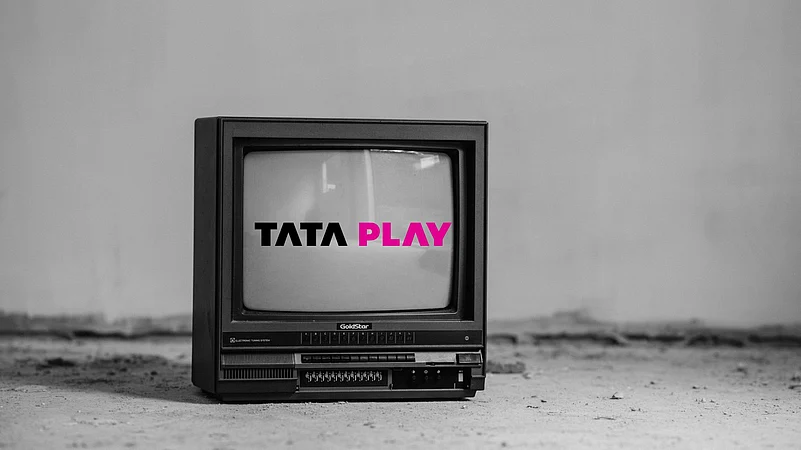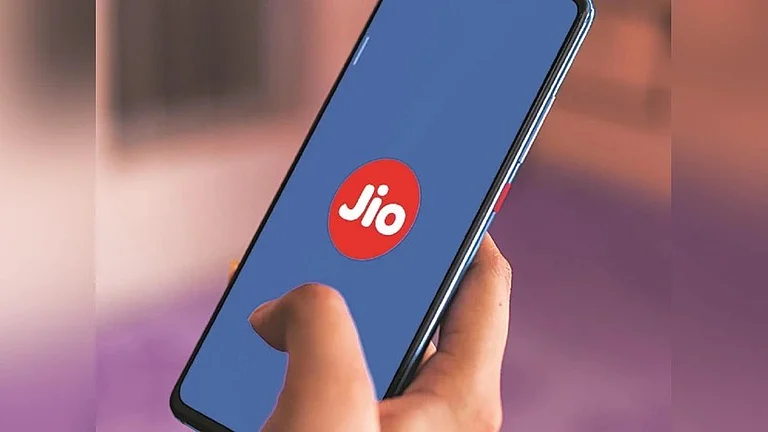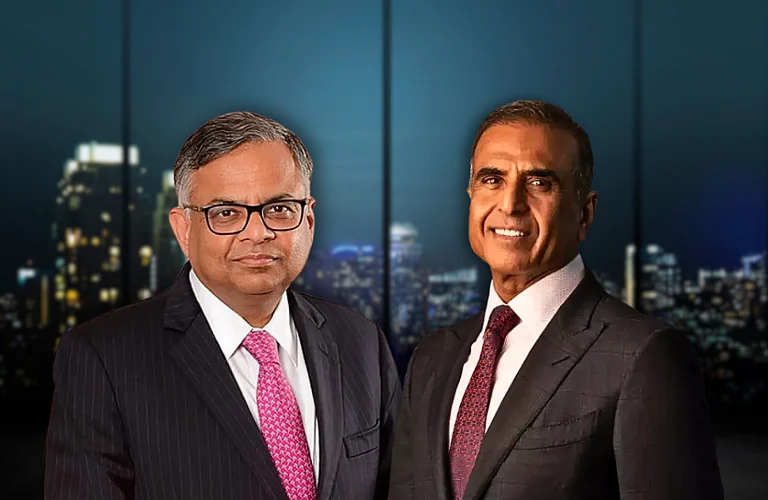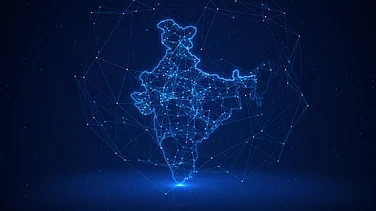Tata Play Limited, the direct-to-home (DTH) pay-TV arm of Tata Sons, has been hit by a declining subscriber base, widening its losses by 44% in the financial year 2024–25 (FY25) to Rs 510 crore, up from Rs 354 crore the previous year.
The company’s operating revenue also declined by 5.46%, falling from Rs 4,305 crore to Rs 4,082 crore during the period. According to credit ratings agency Crisil Ratings, this trend may continue into the next fiscal year.
“Operating revenue is expected to remain flat in fiscal 2026 after a de-growth of 5% in fiscal 2025, largely due to a declining subscriber base,” Crisil Ratings stated in a rating rationale report on May 19. The agency reaffirmed ‘Crisil AA/Stable/Crisil A1+’ ratings on Rs 8,000 crore bank facilities of the company.
Why Tata Play Is Losing Its User Base
Tata Play remains a leader in the DTH industry in terms of revenue and market share, with a strong high-definition subscriber base. TRAI data shows Tata Play had a 31.99% subscriber market share as of September 30, 2024.
However, India’s active DTH subscriber base fell to 58.22 million by December 2024, down from 62.17 million in June—a loss of nearly 3.95 million users in six months, according to TRAI. The industry faces stiff competition among the four large DTH operators, cable TV providers, and free services like DD Free Dish.
Tata Play’s subscriber count dropped 5.39% year-on-year to 20.15 million by the end of FY24. Dish TV and Sun Direct also saw significant declines, while Airtel Digital TV was the only major provider to report growth, with a 1% increase taking its subscriber base to 17.63 million.
Tata Play, owned by Tata Sons (70%) and Walt Disney (30%), had earlier this year attempted to merge with Bharti Airtel’s Airtel Digital TV. However, on May 3, Bharti Airtel called off the talks, citing failure to reach an agreement.
Crisil attributed the decline in Tata Play’s active user base to intense competition from DD Free Dish (operated by Prasar Bharati) and rising digital alternatives like over-the-top (OTT) platforms.
DD Free Dish benefits from offering free-to-air channels beyond government-run networks and is exempt from the 8% license fee that DTH operators must pay on their gross revenue—putting DTH players at a disadvantage.
Reports suggest both Tata and Airtel have urged the government to restrict DD Free Dish to only Doordarshan channels.
Crisil also warned that the increasing popularity of OTT platforms could pose a medium-to-long-term threat to DTH players.
Looming License Fee Dispute
Tata Play is currently entangled in a legal dispute with the Ministry of Information and Broadcasting (MIB) over license fee calculations. In 2020, the MIB raised a demand for additional license fees based on its interpretation of Adjusted Gross Revenue (AGR), which Tata Play and other DTH players contested.
Tata Play has made a provision of around Rs 2,002 crore in its books and recognised an additional Rs 2,280 crore as a contingent liability as of March 31, 2024, pending a final judicial verdict.
Meanwhile, the MIB issued provisional 20-year licenses to all DTH operators, including Tata Play, effective April 1, 2021, allowing them to continue operations until a final decision is made.
In August 2023, TRAI recommended slashing the DTH license fee from 8% to 3% of AGR, with plans to phase it out entirely by FY27, to ease financial strain on operators and bring parity with other broadcasting platforms.
Backing from Tata Sons Remains Strong
Crisil noted in its report that Tata Play continues to receive timely support from its parent, Tata Sons.
“Tata Sons views Tata Play as a strategic subsidiary and has expressed strong support. It will maintain a majority stake in the company,” the ratings agency stated.
Falling DTH revenue is expected to be partially offset by higher income from Tata Play’s broadband business (under Tata Play Broadband Pvt Ltd) and its OTT platform, Tata Play Binge.
In FY25, the adjusted consolidated EBITDA margin remained flat at 42%, compared to 41% in FY24, as price hikes helped offset subscriber churn.
“Operating margins are likely to face pressure as the subscriber base moderates further. However, improving performance of Tata Play Binge and broadband services should help offset the decline,” Crisil noted.
Adjusted debt (including lease liabilities and capital creditors) to adjusted EBITDA improved to 2.1x in FY25 from 2.3x in FY24. This was primarily due to a reduction in total balance sheet debt. The metric is expected to remain between 2.1x–2.3x in the medium term as the company strengthens its balance sheet, according to Crisil.

































